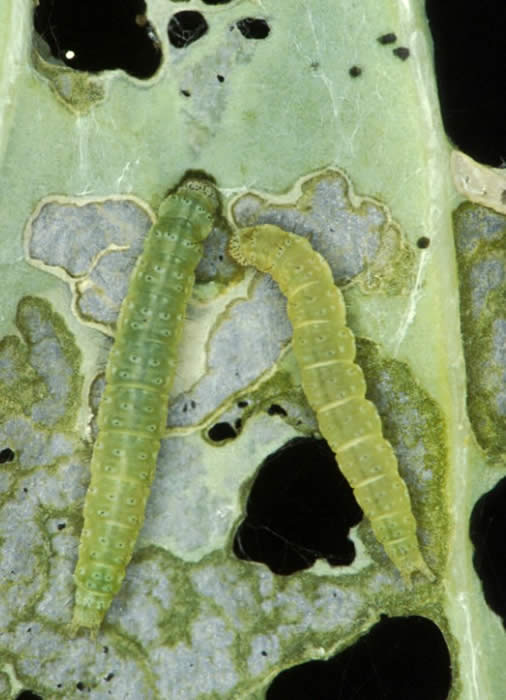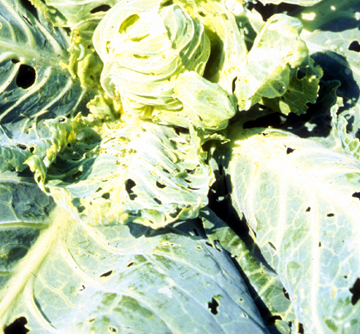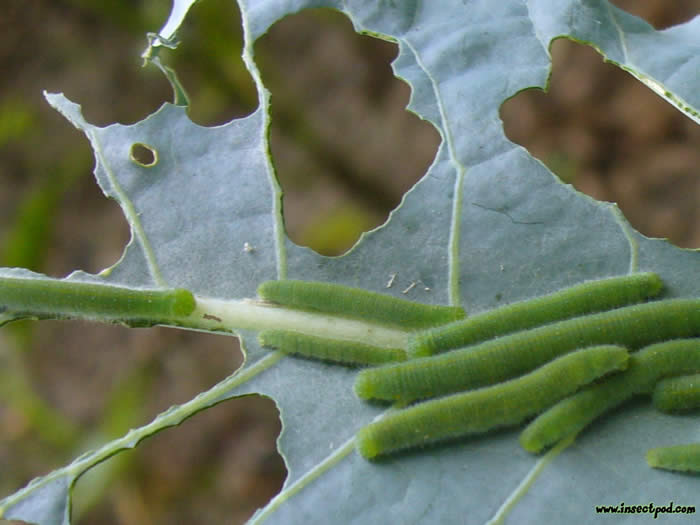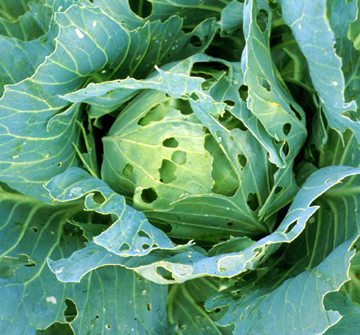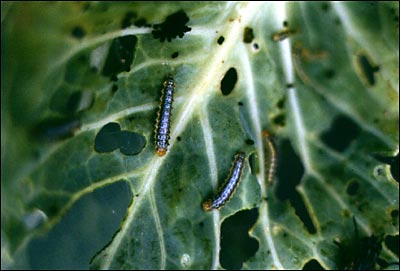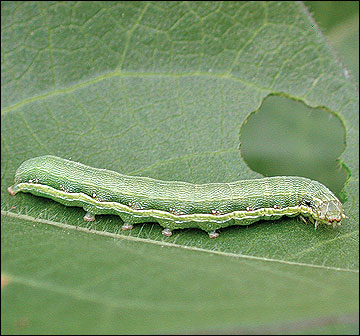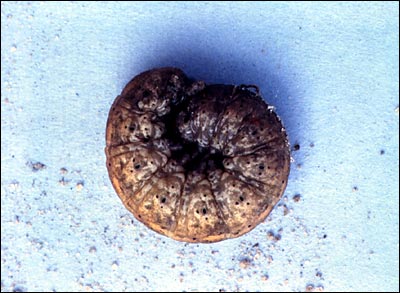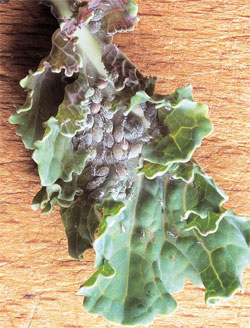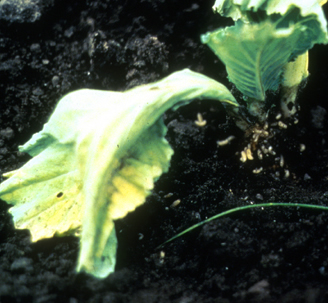Name
Thumbnails
(click to enlarge)
Damage symptoms (click on thumbnails)
Plant injury
Sampling method and economic threshold
- Look at the underside of lower leaves (feeding between viens). Larvae have two pairs of prolegs on abdominal segments. Larvae may feign death when disturbed and drop to the ground.
- Indirect method - look for frass at the base of the head.
- Pheromone traps can be used to monitor moths (traps cannot predict actual feeding damage)
- ET = 5% defoliation (UGA), 10% defoliation from any caterpillar pest in seed bed and heading stage of cole crops (UW, UCONN)
- Start scouting early in the season as damage is rapid (larvae move quickly by balooning from plant to plant)
- Shake plant - are there larvae moving down on silken threads?
- Pull back wrapper leaves and take note of any deformation.
- ET = 10% defoliation from any caterpillar pest in seed bed and heading stage of cole crops (UW, UCONN)
- Look for eggs - they are laid in clusters of 20-30 on the underside of leaves.
- Larvae feed while camoflaged against leaf veins - so examine leaves closely for live caterpillars.
- Look for white moths which fly in zigzag fashion early in the season.
- ET = 10% defoliation from any caterpillar pest in seed bed and heading stage of cole crops (UW, UCONN)
- Look for eggs which are laid in masses underisde of leaves.
- Scout intensively if eggs are found and keep track of egghatch for initiating timely treatment.
- Scout for larvae by examining 10 plants at many random locations.
- ET = 3 caterpillars average on 10 plants (UGA), 10% defoliation from any caterpillar pest in seed bed and heading stage of cole crops (UW, UCONN)
- Scout intensively for egg masses and/or caterpillar aggregates on leaves.
- Early detection and control will prevent extensive leaf damage by more mature larvae that migrate plant to plant.
- Sequential sampling plan: record the number of encounters as you scout; scout harder if you see more larvae; stop scouting if you frequently find the insect.
- Sweep net field margins and weedy areas around the field to locate moths (yellowish brown hairy moths with white hindwings)
- Pheromone traps can be used to monitor moth flight (traps cannot predict actual feeding damage).
- ET = 0.5 larvae per 10 plants or if 2-3% plants have egg masses or larvae (UGA), 10% defoliation from any caterpillar pest in seed bed and heading stage of cole crops (UW, UCONN)
- Look for shot-hole symptoms on leaves. Beetles jump from leaf surface as you approach.
- Using a beat cloth to dislodge adults and make quick estimate of population pressure could work.
- If pest pressue is high, stunting of plants and deformities will be visible (too late to control).
- Scout right after seedling emergence and monitor the transplants. Watch out for areas with extensive stand loss.
- Look for caterpillars near the base of plants and in soil close to seedlings.Cutworms are soft and greasy looking caterpillars that curl into a C when disturbed.
- Conduct sweep net sampling around field margins for locating moths (dark brown wings with kidney-shaped marking)
- ET = 2 to 4% severed plants (UARK)
- Turn over the lower leaves and upper wrapper leaves to find the colonies.
- Sudden increase in natural enemy populations (lady beetles, syrphid flies) may also indicate presence of aphids. Distribution of aphids is highly clustered, so scout intensively before taking action.
- ET = if satellite colonies start appearing on leaves
- First adult emerge at 192 degree days (DD). First adult peak occurs in the range of 314-398 DD, second at 847-960 DD, and so on.
- Look for wilting plants during hot days and uproot those plants. Study the roots and record extent of tunneling.
- Fields with a history of root maggots (sandy areas) should be regularly scouted. Prevention is the best management practice.
- Colored sticky traps placed around field margins can be used to monitor flight activity.
- ET =
- Pheromone traps can be used to monitor moth activity as they migrate between crops. Pheromone traps do not indicate actual crop injury, but can indicate the suitable time of control of this insect.
- ET = apply treatment if 4 to 5% plants have small larvae and 2% plants have large larvae (UGA), OR 10% defoliation from any caterpillar pest in seed bed and heading stage of cole crops (UW, UCONN)
